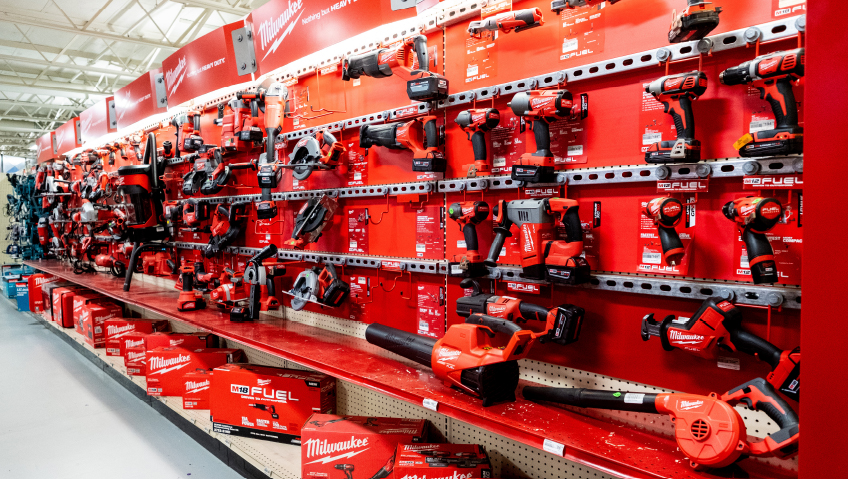Transmission towers support overhead power lines and are critical for electrical power distribution. Predominantly made from steel and ranging in height and voltage capacity, these towers are robust and able to stand up to harsh conditions. And while these structures seem to never change, wires between towers can sag because of temperature changes or age, while other factors, such as emergency loading, higher amperage, vegetation, or new roads being built underneath transmission towers necessitate a greater distance between electrified wires and the ground or other objects.
Demolishing and rebuilding transmission towers is expensive, time-consuming, and extremely disruptive and harmful to the environment. It requires heavy materials like concrete and steel being trucked to site, multiple construction crews, hauling waste to landfill, and taking precious power off-line—electricity that is vital for hospitals, manufacturers, businesses and homeowners alike.
A better way… a safer way
Recognising there had to be a more economical and less wasteful option to building all-new towers, Ampjack was created in 2013. “It was born out of a need in the industry,” says Luke Chaput, President of Ampjack Industries/America Ltd. Starting out as a Manitoba Hydro lineman apprentice in 1989, Chaput has dedicated his career to the utility sector. A qualified Professional Engineer with a degree in Civil Engineering, he served as Business Development Manager and Special Projects Manager at Manitoba Hydro International before transitioning to contract consulting and taking on projects in South America, Central America, and the Caribbean.
While working as a lineman, Chaput was part of a team doing tower raising the conventional way, using cranes and bucket trucks. Raising the structures meant lines could have greater capacity and run hotter and in Manitoba, which is relatively flat, the traditional tower-raising method worked. Other locations, however, presented challenges such as difficult terrain that made it difficult for cranes and large equipment.
“With all of those issues, we had to come up with a better way, a more sustainable, safe, and accessible way to achieve the same result, which is raising the tower,” says Chaput.
Along with its AMPJACK® lattice tower raising and AMPJACK® tubular structure raising systems, the company’s services include foundation repairs and upgrades, corrosion inspection and repairs, cathodic protection, emergency tower repairs, and customized construction methods. “The tower raising is a patented technology,” Chaput explains. “The services we focus on—infrastructure, rehabilitation, or what we call life-extending or reliability and capacity increases—make us one of the few companies in North America to do that. We don’t build new power lines or compete with the big players who do that. We stay in our asset management/asset maintenance niche.”
Providing transmission owners of all sizes, whether it be large investor-owned utilities (IOU), private developers, federal or provincial agencies, and even the smallest REC/Muni/Coops, with total package solutions, Ampjack has worked on about 1,500 towers to date, ranging from 100 kV to 735 kV. Based out of Winnipeg, Manitoba, the Canadian entity is known as Ampjack Industries, while the Nevada operation is Ampjack America Ltd. The company takes on projects across North America, and is preparing for work in Spain, Scotland, and Ireland. The 2025-2026 schedule will see the team further expanding into Europe.
Ampjack’s approach was developed and engineered with safety in mind, including the workers high in the towers themselves and crews on the ground. While conventional tower raising uses a crane—which is slung to the top of the tower, then separated, with everyone below then working under a potentially dangerous suspended load—Ampjack’s system is installed inside the tower, which is split but never separated and securely holds the tower in place with hydraulic rams and cylinders in a positive control. This system gives the experienced crew complete control of the tower down to one-eighth of an inch in accuracy while the tower remains safely held.
“We completely eliminate the suspended load and do the work in a location on the tower that is well outside the safe working distances; we work a long way away from the energized wire,” says Chaput. “And because it’s an engineered solution, we can determine where we are going to install AMPJACK®, split the tower, and raise it. So, there are a lot of safety features built into AMPJACK®.” The AMPJACK® system itself is designed to work in winds up to 25mph, with a four-to-one safety factor over typical conditions. The system allows crews to work in unique conditions, while staying safe, especially with unpredictable wind, rain, and other weather events.
How it works
The company is committed to safety, sustainability, and innovation. With a trained team including engineers, analysts, trainers, and power line technicians, about 90 percent of the company’s work is self-performed. “We are EPC—engineering, procurement, and construction—but we have worked in multiple ways: as a subcontractor, as a prime contractor with subcontractors, with utilities, and in all facets,” Chaput explains. Typically a prime contractor in North America, Ampjack will likely serve as a subcontractor to approved prime contractors in Europe.
Even when working as a subcontractor, certified Ampjack technicians are provided to every project, one in the tower with the crew and the other on the ground. “We are making sure AMPJACK® is being installed safely and correctly, and being used correctly,” says Mike Haight, Director of Business Development. “Even if it’s not a full Ampjack crew, we are not just selling the equipment or leasing it out through a utility, saying, ‘Here’s a manual, have fun and let us know how it goes.’ We have qualified and certified personnel on every project to make sure it is going the way it’s supposed to. And if the technician deems it’s not correct or is unsafe, they will put a hold on that project until it is done properly.”
Described by the company as a “crane in a box,” the AMPJACK® Lift System works on practically any tower design, from the simplest to the most complicated multiple circuit towers. Mounting inside the body of a transmission tower (which provides crews with a safe working zone), the modular system is engineered to safely lift the entire tower section and conductor.
“Our standard is five-foot increments,” says Chaput of the system. “We’ve raised anything from five feet up to 25 feet to date. So, a 200-foot tower can easily become a 225-foot tower.” Once the tower is raised to the desired height, new tower framing is installed, and AMPJACK® is removed. “We’ve raised towers that were over 110 years old,” he says. “It’s pretty amazing what you can do. The infrastructure lasts a lot longer than people give it credit for.”
In all areas, the AMPJACK® system stands out. It is safe and eliminates the need for large crews to demolish and rebuild an existing tower. There is no waste compared to complete rebuilds or new towers. Since AMPJACK® can be brought in on a skid steer/telehandler or even via helicopter, it significantly reduces any environmental impact and allows utility customers access to sometimes completely restricted areas.
For utility customers, one of the biggest benefits is not having to de-energize existing power lines. Over 95 percent of the time Ampjack is raising towers, the power remains on. If utilities have to turn power off, they often reduce system reliability and have to purchase alternate power elsewhere at a higher cost.
“Keeping lines energized while performing the tower raises and upgrades is a huge cost savings to the transmission owners,” says Haight. “You’re not only reducing the overall project cost by reusing the existing infrastructure, rather than tearing down and rebuilding towers, but also maintaining their revenue by not taking lines out of service. Although not typically thought of in terms of cost savings, there is an inherent value to having a more reliable system as well, which is achieved with non-outage construction.”
ExoGrid™
The company’s latest innovation, ExoGrid™ is “the eco-friendly way to increase grid capacity without new right-of-way acquisition.” As a circuit multiplier, it allows for adding circuits above or below existing transmission lines. “It’s a little different from AMPJACK® itself, and more geared toward traditional line construction, with a very different constructability,” says Haight.
“What we are essentially doing is building a steel exoskeleton around the existing tower to create a new structure to support the additional circuit(s). We can also utilize ExoGrid to rerate or strengthen existing towers to withstand more extreme weather events, harden for reconductoring, or change the tower for different uses, even when a new circuit is not being added.”
Lines only have so much capacity before they reach the maximum safe operating temperature of the wire, and ExoGrid™ is the company’s latest method to get more capacity out of existing right-of-way transmission systems. Essentially, taking over from where AMPJACK® ends—such as in areas where doubling or tripling capacity is needed, like new data centre requirements—ExoGrid™ allows more circuits to be added and affords greater ability for existing towers to have more bundles of wire to exponentially gain capacity. “It is very good at increasing the existing strength of a structure to accommodate new wind or structural loads, which increases safety,” says Chaput.
Taking on challenging projects for many of the large IOUs in North America, Ampjack is responsible for both individual and multiple tower-raising projects. One of the largest was for one of the largest Eastern Canadian provincial utilities. A 735 kV thermal upgrade, the company took on 50 Energized Tower Lifts. With Ampjack responsible for engineering, material procurement, and construction, the large-scale job took place from March 2022 to September 2023. This saw the company work on a series of five-foot and 10-foot tower lifts on four unique tower types. “Ampjack supplied detailed design, the AMPJACK® Lift System, material procurement, and installation of new mid body tower extensions for the project as part of our complete EPC service offering,” the company describes. “This project is a key milestone for our company, as it was the first energized 735 kV project completed using the AMPJACK® Tower Lift system.”
In the years to come, the team wants to see Ampjack become a common name in the global utility sector. “When I started this company, I wanted to hear somebody say, ‘I’m going to Ampjack that tower,’” says Chaput. “I want Ampjack to become as synonymous with our product as Kleenex. It’s not ‘nose tissue,’ it’s Kleenex, and everybody knows what Kleenex is. And I want people to understand Ampjack is the name of a company that supplies industry-leading, safe, economical, common-sense technology and solutions to problems the industry faces. That’s what I’ve always wanted. I want to see the company continue—because I think we’ve done a phenomenal job—but continue to be the group people come to with real, strong challenges they don’t have a solution for.”






